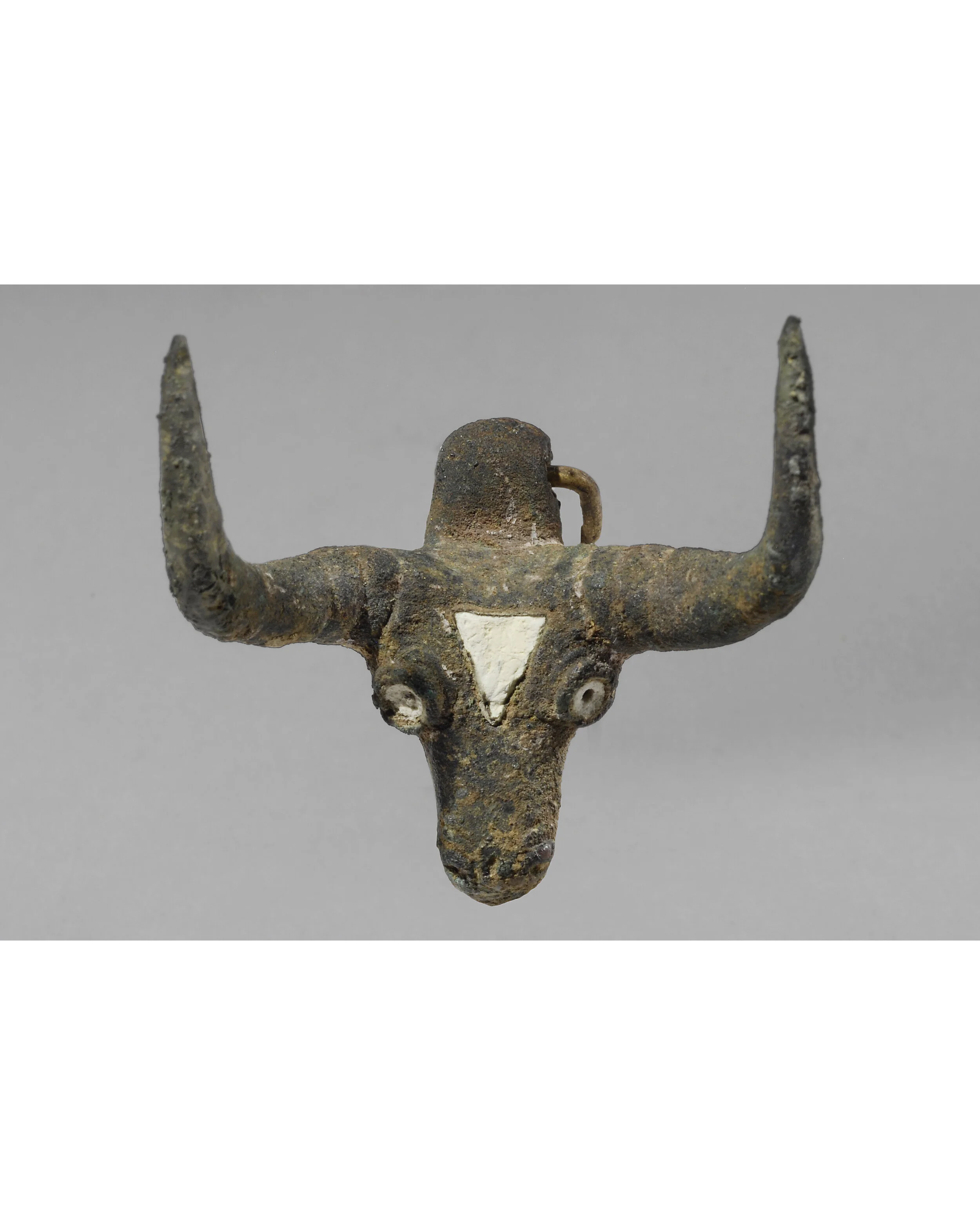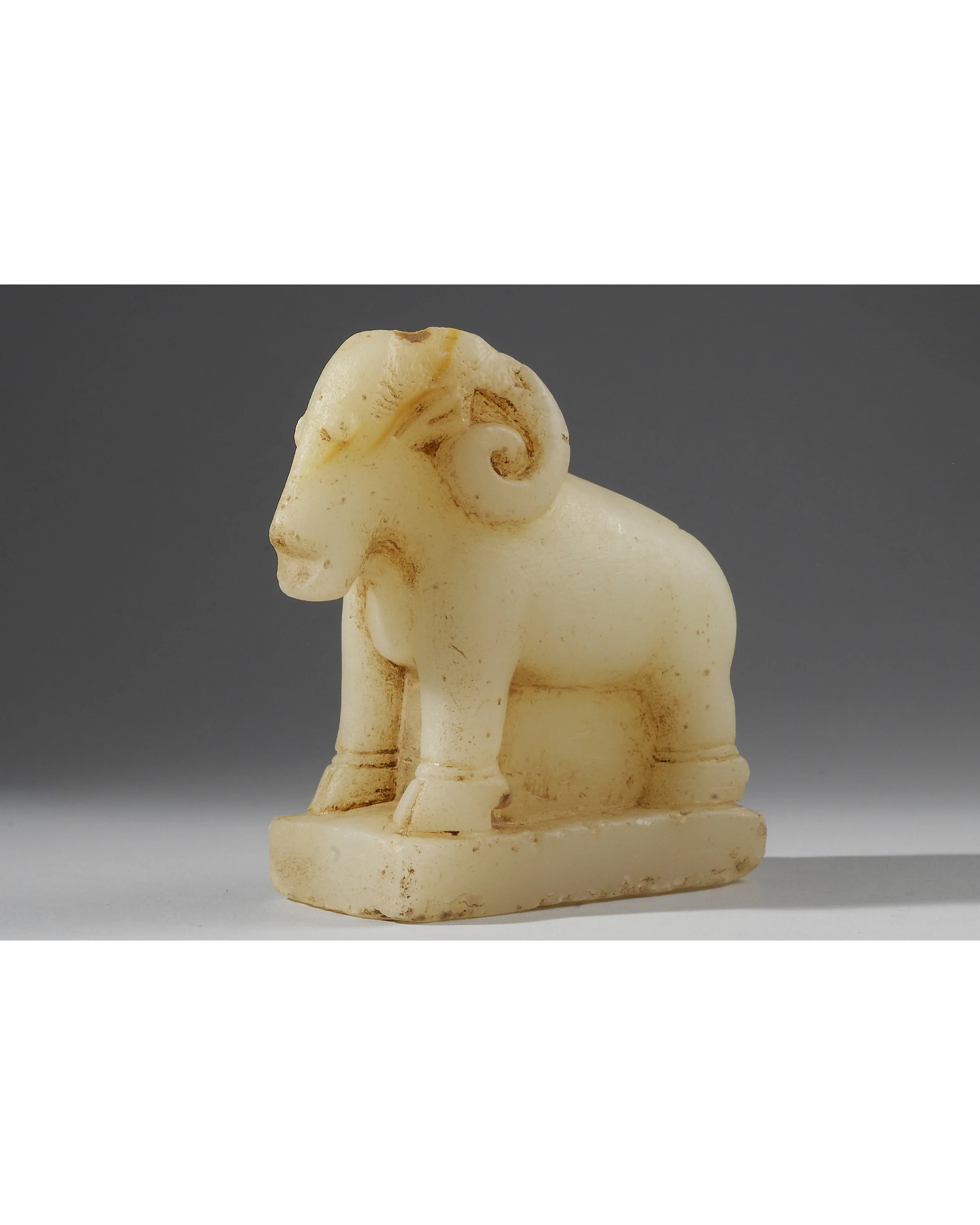Ancient Near Eastern Alabaster Dish with Stylized Animal's Head



Ancient Near Eastern Alabaster Dish with Stylized Animal's Head
Syrian, 8th - 7th century B.C.
Alabaster
D: 9 cm
Serial: 1626
Provenance: Christie’s, New York, 7 December 1995, lot 2
This charming alabaster bowl has been skillfully and decoratively carved with popular Near Eastern motifs: a stippled six petalled rosette on a ground of concentric circles is incised on the flat bottom of the bowl; numerous ribs emanate from the bottom to just below the flat lip. A single flat handle is carved in the shape of a stylized animal’s head. The general shape of the head resembles that of a duck or a crocodile, with a short rounded skull and elongated beak/snout. Additional carved and incised details such as the ribbed pattern that continues onto the back of the head, perhaps suggesting scales, and an incised zigzag (fangs?) seem to suggest a more reptilian character. During the 8th – 7th century, the Assyrian empire was very cosmopolitan in character, incorporating cultures from throughout the Near East and Mediterranean. This bowl displays elements that point to Egyptian and/or Phoenician influences, such as the style of the rosette, with its elongated petals, and the handle. The crocodile was a well known Egyptian and Phoenician motif thought to possess powers of strength and protection. The choice of material – alabaster was a luxury material, and its use would have been reserved for either the very wealthy or for objects of ritual significance – and the size of the bowl suggests that it may have been used for ceremonial functions, such as the pouring of libations or perhaps to mix pigments for cosmetics.









